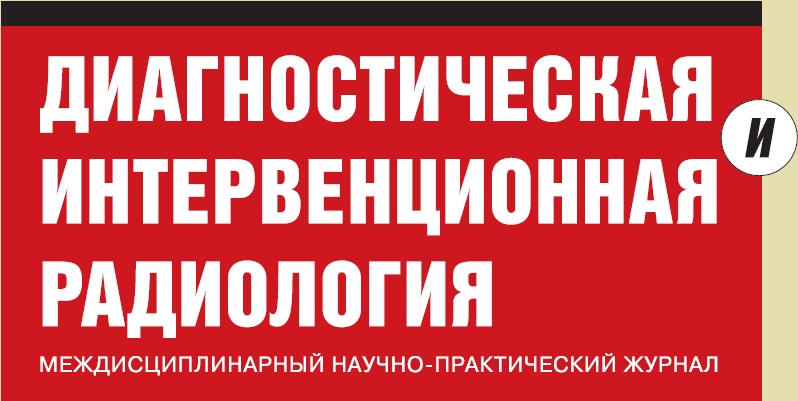Аннотация: В статье предпринята попытка систематизации вариантов пункционной холангиостомии, что позволяет изменить представления о ней как о простом в исполнении рутинном интервенционно-радиологическом вмешательстве. Осмысленное и обоснованное применение пункционной ЧЧХС с использованием всех технических возможностей современной интервенционной радиологии и профессионального кадрового потенциала существенно расширяет сферу применения этой технологии, позволяет «малыми средствами» решать сложные клинические задачи, оптимизируя условия для оказания эффективной высокотехнологичной медицинской помощи больным. Следует ожидать, что приведение к «общему знаменателю» сведений, относящихся к вариантам ЧЧХС, оптимизирует их планирование и учет, повысит качество выполнения и эффективность, облегчит клинический и научный анализ результатов. Список литературы 1. Remolar J., Katz S., Rybak B., et al: Percutaneous transhepatic cholangiography. Gastroenterology 1956; 31:39-46. 2. Ivsin V.G., Jakunin A.Ju., Lukichev O.D. Chreskoghnie diagnosticheskie i ghelcheotvodjaschie vmeshatelsnva u bolnih mehanicheskoy gheltuhoy [Percutaneous diagnostic and zhelcheotvodyaschie intervention in patients with obstructive jaundice]. Tula, 2000; 312. [In Russ]. 3. Molnar W, Stockhum AE: Relief of obstructive jaundice through percutaneous transhepatic catheter - a new therapeutic method. AJR. 1974; 122: 356—367. 4. Pereiras RV, Rheingold OJ, Huston D, et al: Relief of malignant obstructive jaundice by percutaneous insertion of a permanent prosthesis in the biliary tree. Ann. Intern. Med. 1978; 89: 589. 5. Kukushkin A.V. Profilaktika i lechenie osloghneniy antegradnih rentgenoendobiliarnih vmeshatelstv u bolnih s mehanicheskoy gheltuhoy opuholevoy etiologii. [Prevention and treatment of complications of antegrade rentgenendobiliary interventions in patients with obstructive jaundice of tumor etiology.] Dissertacia kandidata medicinskih nauk, Moskva, 2005; 233 s. [In Russ]. 6. International classification of procedures in medicine. Volume 1 World Health Organization, Geneva, 1978. 7. Cheng Y.E, Chen C.L., Huang T.L. Single imaging modality evaluation of living donors in liver transplantation: magnetic resonance imaging. Transplantation 2001; 15: 1527—1533. 8. Couinaud C. Intrahepatic biliary ducts. In: Couinaud C (ed). Surgical anatomy of the liver revisited. Paris 1989; 61—74. 9. Couinaud C. (translated by Nimura Y.) Couinaud’s surgical anatomy of the liver. Tokyo: Igaku Shoin 1996; 1. 10. Gadzijev E.M., Ravnik D. Atlas of applied internal liver anatomy. Springer, Vienna New York Heidelberg Berlin Tokyo 1996. 11. Healey J.E., Schroy PC. Anatomy of the biliary ducts within the human liver. Arch. Surg. 1953; 66: 599—616. 12. Ishiyama S., Yamada Y., Narishima Y. et al. Surgical anatomy of the hilar bile duct carcinoma (in Japanese). Tan to Sui (J.Biliary Tract and Pancreas) 1999; 20: 811—829. 13. Kawarada Y., Das B.C., Onishi H. et al. Surgical anatomy of the bile duct branches of the medial segment (B4) of the liver in relation to hilar carcinoma. J Hepatobiliary Pancreat Surg. 2000; 7: 480—485. 14. Kawarada Y., Das B.C., Taoka H. Anatomy of the hepatic hilar area: the plate system. J. Hepatobiliary Pancreat. Surg (2000); 7: 580—586. 15. Kida H., Uchimura M., Okamoto K. Intrahepatic architecture of bile and portal vein (inJapanese). Tan to Sui (J Biliary Tract and Pancreas) 1987; 8: 1—7. 16. Mizumoto R., Suzuki H. Surgical anatomy of the hepatic hilum with special reference to the caudate lobe. World J. Surg. 1988; 12: 2—10. 17. Nimura Y., Hayakawa N., Kamiya J. Clinical significance of selective cholangiography from the viewpoint of liver segment concept. Shokakibyo Gaku no Saikin no Shinpo. Tokyo 1986; 35—36. 18. Smadja C., Blumgart L.H. The biliary tract and the anatomy of biliary exposure. In: Blumgart L.H., ed. Surgery of the liver and biliary tract; 2nd ed. Edinburgh: Churchill Livingstone 1994; 1: 11—24. 19. Semenkov A.V., Bekbauov S.A., Eilin A.V. Anatomiya vnutripechenochnih ghelchnih protokov, variantnost stroeniya [Anatomy of the intrahepatic bile ducts, the variability of the structure]. Hirurgiya, 2009, 8, 67—72 [in russ]. 20. Wong J.H., Krippaehne W.W., Elechter W.S. Percutaneous transhepatic biliary decompression: results and complication in 30 patients. Am. J. Surg. 1984; 147: 615—617. 21. Berquist T.H., May G.R., Johnson CM, Adson MA, Thistle J.L. Percutaneous biliary decompression: internal and external drainage in 50 patients. Am. J. Roentgenol. 1981; 136: 901—906. 22. Clark RA, Mitehell SE, Colley DP, Alexander E: Percutaneous catheter biliary decompression. Am J. Roentgenol. 1981; 137:503—509. 23. Eerucci J.T. Jr., Mueller PR., Harbin W.P.: Percutaneous transhepatic biliary drainage. Technique, results and applications. Radiology. 1980; 135: 1—13. 24. Hamlin J. A., Friedman M., Stein M.G., Bray J.E: Percutaneous biliary drainage: complications of 188 consecutive catheterizations. Radiology. 1986; 158:199—202. 25. Reimann J.E. Complications of percutaneous bile drainage. In: Classen, M., Geenen J., Kawai K.: Non surgical Biliary Drainage, Berlin: Springier. 1984; 29—35. 26. Yee A.C.N., Ho Ch. S. Complications of percutaneous biliary drainage: benign vs. malignant diseases. AJR. 1987; 148: 1207—1209. 27. Mueller PR., van Sonnenberg E., Eerrucci J.T. Jr.: Percutaneous biliary drainage. Technical and catheter related problems in 200 procedures. Am J. Roentgenol. 1982; 138:17—23. 28. Passariello R., Rossi P., Simonetti G., Pavone P.: Cooperative study of percutaneous biliary drainage: statistical data on 731 patients. Radiology, in press, 1984.

Сайт предназначен для врачей







